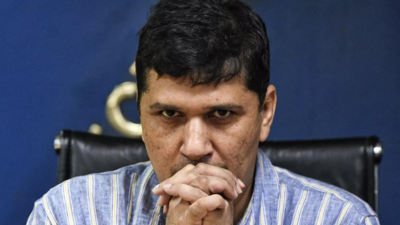
Education in America is often narrated through its symbols of prestige: The marble halls of the Ivy League, billion-dollar endowments, cavernous football stadiums, and dorm life that looks like freedom rehearsed. But for most of the 19 million college students in the United States, as reported by The New York Times, that picture is a mirage. Their college story is not about privilege or pedigree. It is about survival. The fight between President Donald Trump and Harvard University, once splashed across headlines, barely registers in their lives. Instead, they are managing grocery bills, work shifts, child-care duties, and part-time classes. They are the faces of an education system that promises mobility, but more often delivers debt, delay and doubt.
Community colleges : The real backbone
Forget the Ivy League. The true workhorses of American higher education are community colleges and regional public universities. According to The New York Times, nearly 43% of undergraduates, about 9 million students, are enrolled in community colleges. These students are not buying sweatshirts in campus bookstores or chanting fight songs. They are attending evening classes after jobs, or commuting from homes that may be just a few miles from campus but worlds away from the narrative of elite academia. And for three out of four community college students, progress is slow and uneven because they are enrolled part-time. What draws them is affordability, flexibility, and proximity, not prestige.
Parenting while studying
One in five undergraduate students in the US is also a parent, a reminder that higher education is not just for the young. According to the same reporting, 1.4 million undergraduates are single mothers, balancing tantrums and term papers. Many of their children are in school themselves, a generational relay of learning, but also of struggle.
The digital turn
The pandemic did not just shift classrooms online, it cemented a new normal. Today, 10.3 million students take at least some classes online, with 26% enrolled exclusively online, The New York Times notes. A decade ago, that number was just 11%. For many, this means they will never visit the campus whose name is on their diploma. Online education offers flexibility, but also fosters detachment. As researchers caution, much of the booming world of boot camps and certifications adds credentials of limited long-term value.
Life at home, not in dorms
The iconic dormitory life of American movies is not reality. Only 16% of undergraduates live on campus. A full 25% live with their parents, folding their education into the daily routines of family obligations.
Debt as the great equalizer
For those who persist, the cost of a degree is heavy. The New York Times reports that the median former student owes $19,000 in loans, up from $13,000 two decades ago, even after adjusting for inflation. For those who pursue graduate degrees, the burden balloons to an average of $69,000. The weight of debt is not distributed equally. Two-thirds of student debt belongs to women. Black women carry the steepest load, averaging $33,000, three times more than white men, and $15,000 more than white women.
Aid, but not enough
About a third of undergraduates receive Pell Grants, the federal program aimed at low-income students. Last year, more than $31 billion in Pell Grants were distributed, part of over $100 billion in total federal, state, and local aid. And yet, the need still outpaces the assistance.
The unfinished story
Perhaps the most sobering statistic is this: 41 million Americans attended college but never graduated. That is 12% of the population with some credits but no degree, carrying debt without the payoff. American higher education is often marketed as a ladder, one that can take a student from any background to economic and social mobility. But the reality is a patchwork of part-time schedules, unpaid bills, online logins, and relentless balancing acts. For a minority, the path runs through ivy-covered gates and into networks of influence. For the majority, the climb is steeper, lonelier, and defined not by prestige but by persistence. And that is the hidden reality: In the world’s most celebrated higher education system, survival has become the syllabus.TOI Education is on WhatsApp now. Follow us here.






